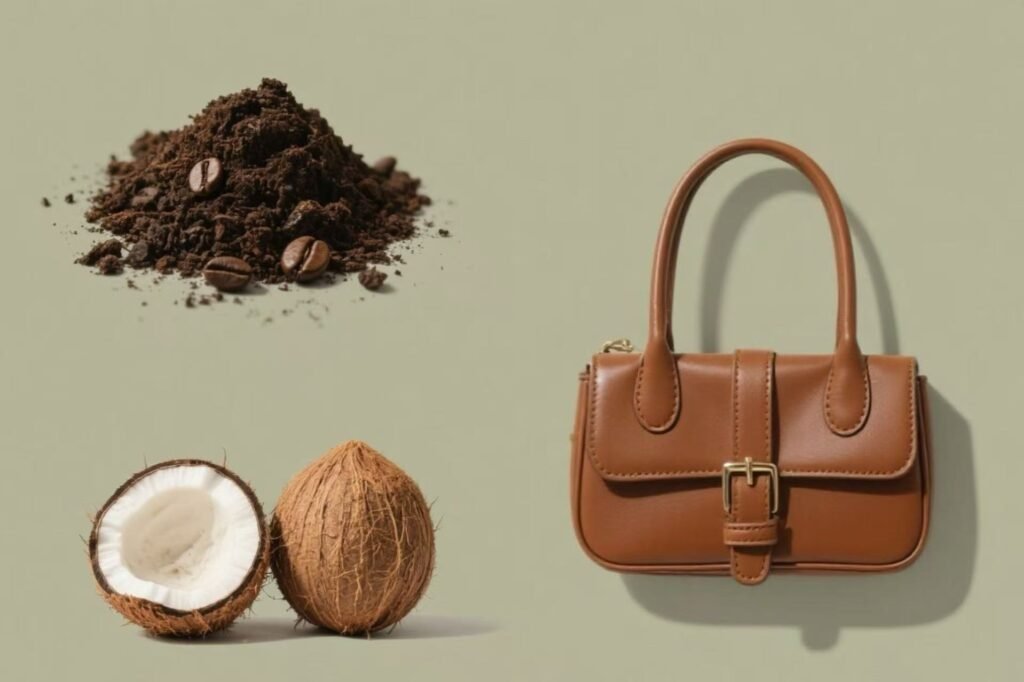When coffee grounds and coconut shells are no longer discarded as waste, but embraced as treasures in the fashion industry, a new type of bio-based leather made from plant waste is quietly emerging. This innovative material not only solves the environmental problems of the traditional leather industry but also paves the way for a circular economy, making sustainable fashion a reality.
Environmental Breakthrough: Transforming Agricultural Waste into Valuable Resources
Traditional leather production relies on animal hides or petrochemicals, generating significant pollution. Scientists and material companies are now using coffee grounds, coconut shells, and other agricultural and food processing wastes, combining them with water-based polyurethane and other eco-friendly resins through biotechnological processes, to create a material with properties similar to real leather. This bio-based leather reduces reliance on animals and dramatically lowers carbon emissions and environmental pollution.
Technical Process: From Waste to Leather
The production of this innovative material integrates material science and environmental protection technology:
- Raw Material Pretreatment: Coffee grounds and coconut shells are cleaned, dried, and ground to extract their effective fiber components.
- Resin Composite: The processed plant fibers are mixed with water-based polyurethane to enhance the material’s strength and durability.
- Forming and Processing: Through coating, embossing, and drying, the material is given a texture and feel similar to real leather, while ensuring waterproof and wear-resistant properties.
Market Prospects: A New Choice for Fashion, Home, and Automotive Industries
Thanks to their unique environmental properties and leather-like performance, these bio-based leathers are gradually being applied in various fields:
- Fashion Industry: Luxury and sustainable fashion brands are using this material to create handbags, shoes, and accessories, reducing their carbon footprint.
- Home and Automotive: Eco-friendly sofas, car seat interiors, and other products are starting to incorporate this material, improving sustainability.
- Circular Economy: These once-discarded wastes are now high-value materials, promoting resource recycling in the agricultural and food industries.
Future Outlook: Redefining Sustainability
As global environmental policies tighten and consumer demand for sustainable products grows, bio-based leather is expected to gradually replace traditional leather, becoming the mainstream choice. Scientists are also exploring the use of other plant materials, such as pineapple leaves and apple peels, to further expand the boundaries of bio-based materials.
“This is not only a material revolution but also a rethinking of traditional production methods,” said an industry expert. “When waste becomes fashion material, we are one step closer to a true circular economy.”


